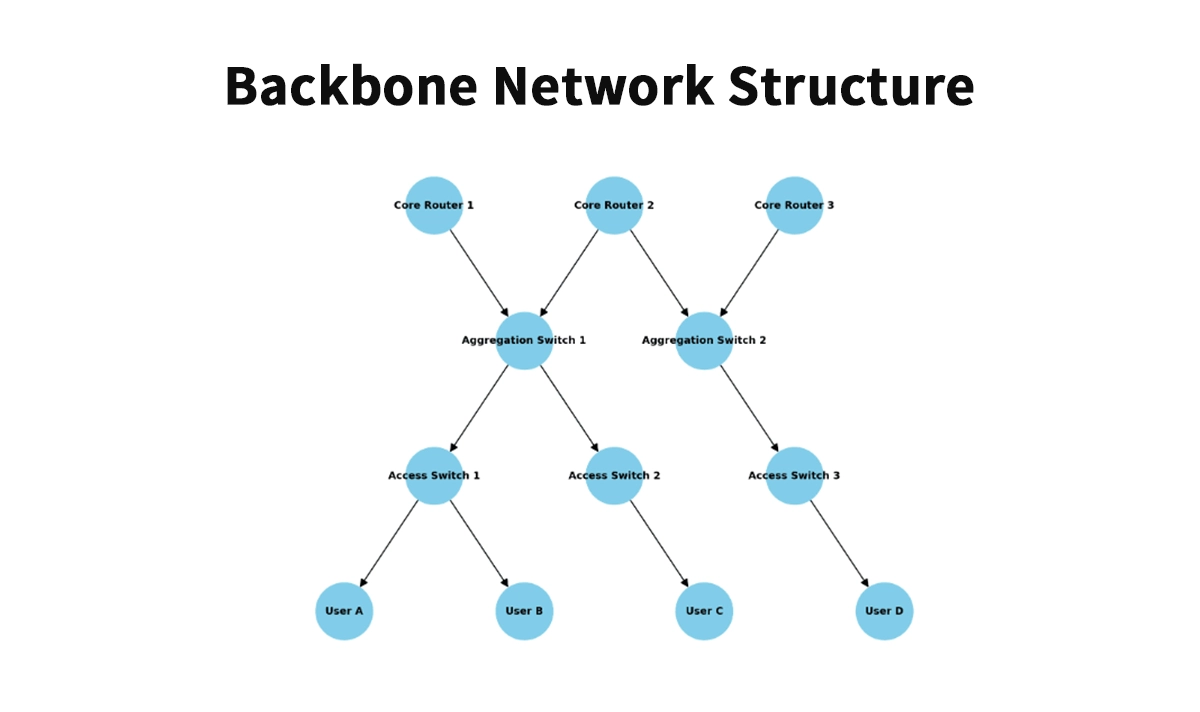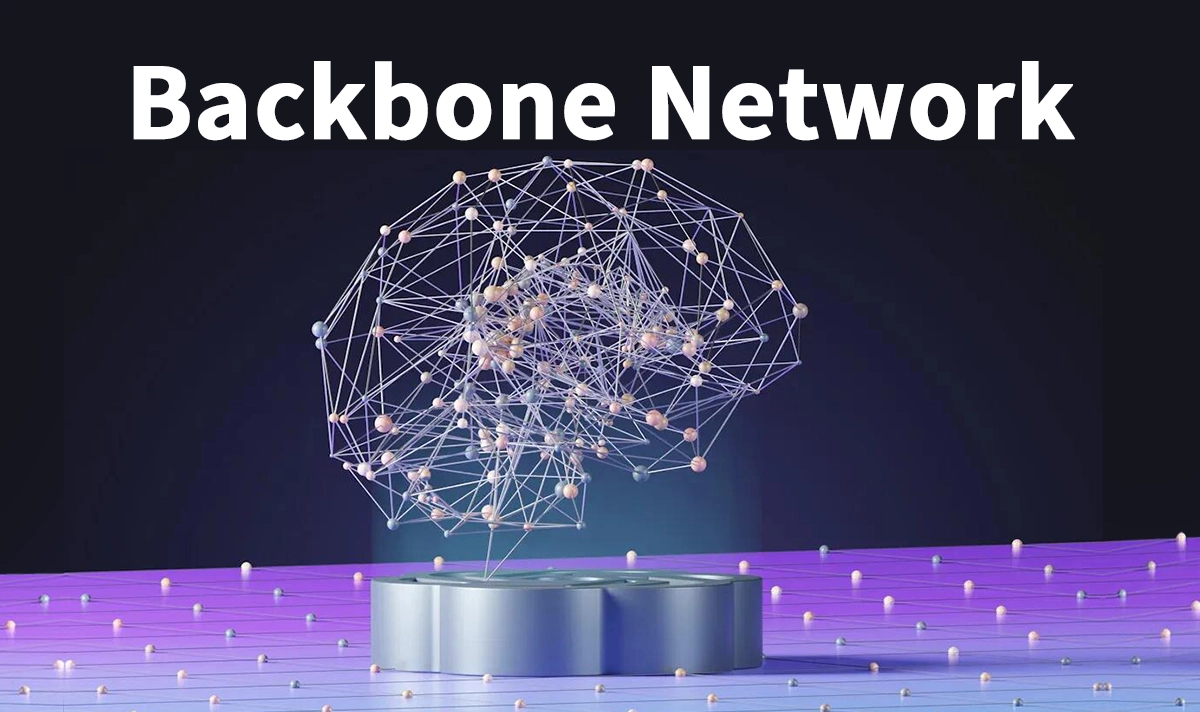
A backbone network is the central channel connecting multiple subnetworks, enabling fast, reliable, and large-scale data communication across cities, regions, or countries. Often compared to a digital highway, backbone networks support high-speed internet, enterprise connectivity, and data center interlinks.
Powered primarily by fiber optic cables, these networks offer low latency, high bandwidth, and resistance to electromagnetic interference, making them ideal for long-distance data transmission. Core components such as routers, switches, and long-distance transceivers manage traffic efficiently, ensuring seamless communication between networks without directly serving end users.
Key Takeaways
1. Main Data Highway – Connects subnetworks over large areas for fast, reliable communication.
2. Fiber Optic Technology – High-speed, low-latency, and interference-resistant connectivity.
3. Layered Architecture – Access, distribution, and core layers optimize data flow and scalability.
4. Reliable Routing – Routers and switches direct traffic; redundancy ensures continuous service.
5. Security & Management – Strong planning, monitoring, and security protect data and network growth.
What Is a Backbone Network?
A backbone network acts as the high-capacity core linking smaller networks like LANs and MANs. While it does not directly serve end users, it enables these subnetworks to exchange data efficiently. Modern backbone networks leverage technologies like MPLS, DWDM, and high-speed fiber optics to support large-scale data transfer with minimal latency.
Tip: Think of a backbone network like the interstate system for data—local roads feed into the highway to carry massive traffic across regions.

Backbone Network Architecture
Hierarchical Layers
1️⃣ Access Layer – Connects end-user devices (computers, printers, wireless APs). Handles authentication, local traffic management, and VPN access.
2️⃣ Distribution (Aggregation) Layer – Aggregates and filters traffic, enforces policies, manages routing (OSPF, BGP), and prioritizes critical applications.
3️⃣ Core Layer – Provides high-speed transmission, redundancy, and fault tolerance. Connects multiple networks (WANs, ISPs, data centers).
Tip: Imagine it like a city’s transport system: core = highways, distribution = main roads, access = local streets.
Key Components
Component | Role in Backbone Network |
|---|---|
Router | Connects networks, directs data between IP networks (Layer 3), provides NAT and firewall protection. |
Switch | Forwards data within LANs based on MAC addresses (Layer 2), segments traffic, ensures internal connectivity. |
Transmit data at high speeds (up to 800 Gbps+), low latency, long distance, immune to interference. |
Network Backbone Types
♦ Serial Backbone – Single cable connection, simple and cost-effective but limited scalability.
♦ Parallel Backbone – Multiple cables, high fault tolerance, enhanced performance.
♦ Collapsed Backbone – Centralized high-capacity router/switch; simplifies management but single point of failure.
♦ Distributed Backbone – Connections spread across multiple nodes; high scalability and redundancy.
Advantages of Backbone Networks
High Speed & Bandwidth – Fiber optic networks support up to 100 Gbps today, scaling to terabits per second.
Reliability & Redundancy – Redundant pathways and load balancing maintain uptime.
Wide Coverage – Connects distant locations with minimal signal loss.
Low Latency – Real-time applications benefit from minimal delays.
Security – Firewalls, encryption, and intrusion prevention protect against cyber threats.
Scalability – Modular architecture allows upgrades without disrupting operations.

Enterprise Backbone Networks
For enterprises, a backbone network must provide:
High reliability for mission-critical applications.
Low latency for video conferencing and cloud services.
Scalable design for future growth.
Robust security through encryption, VPNs, and firewalls.
Multisite connectivity via WAN or SD-WAN.
Emerging trends include cloud-native architectures, software-defined networking (SDN), and AI-integrated security, which ensure agility, resilience, and cost efficiency.
Frequently Asked Questions
Q1: What is the main purpose of a backbone network?
A backbone network connects subnetworks and manages large data flows, acting as the central highway for data between regions or countries.
Q2: How does a backbone network improve reliability?
Through redundancy and multiple pathways, the network ensures uninterrupted service even if one connection fails.
Q3: Why are fiber optic cables used?
Fiber optics provide high-speed transmission, low latency, and immunity to electromagnetic interference, making them ideal for backbone infrastructure.
Q4: Can backbone networks be upgraded easily?
Yes. Their layered, modular architecture allows targeted upgrades without disrupting the entire network.




